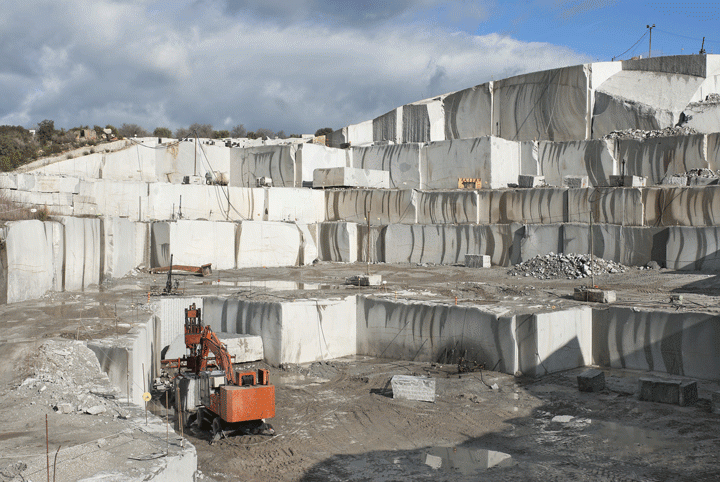Discovering Granite Quarries in South Africa: A Comprehensive Guide
Discovering Granite Quarries in South Africa: A Comprehensive Guide
Blog Article
Uncovering the Rich History and Lasting Practices of Granite Quarrying
As we stand on the precipice of revealing the elaborate tapestry of granite quarrying, a trip through time exposes not just the physical act of drawing out stone yet likewise the social and historical relevance woven right into the extremely textile of this technique. From the ancient beginnings that laid the foundation for modern-day quarrying strategies to the lasting techniques that are shaping the future of this sector, each chisel mark on granite surfaces narrates waiting to be unearthed (granite quarries in south africa). The legacy of granite quarrying extends much past mere extraction; it is a testament to human resourcefulness, strength, and the enduring allure of this impressive stone
Ancient Origins of Granite Quarrying
Dating back to old human beings, the technique of quarrying granite has been an essential part of human background and building advancement. The earliest evidence of granite quarrying dates back to ancient Egypt, where large pyramids and elaborate sculptures were crafted from this resilient rock. The Egyptians used primitive devices to remove granite blocks from quarries, showcasing the value of this material in their huge buildings.
Relocating onward in history, the Greeks likewise made significant contributions to the quarrying of granite. The Greeks made use of granite in various architectural wonders, such as temples and statues, showing their skill in shaping and carving this sturdy stone. The Romans better fine-tuned the techniques of quarrying granite, utilizing advanced devices like chisels and hammers to extract and shape granite for their famous frameworks.
Via the centuries, the technique of quarrying granite has actually evolved, with contemporary technologies improving efficiency while keeping the classic charm of this natural rock - granite quarries in south africa. From ancient civilizations to contemporary contractors, the tradition of granite quarrying continues to form our globe
Development of Quarrying Methods
The evolution of quarrying methods has been marked by a continuous progression in the direction of better performance and accuracy in drawing out granite. From the primary approaches utilized by our ancestors to the innovative innovations utilized in modern-day quarrying operations, the sector has undergone substantial improvements. Early quarrying techniques entailed manual work with standard tools such as knives, hammers, and wedges to draw out granite blocks from the planet. As people progressed, strategies like fire-setting and primitive explosives were presented to help with the removal process.
In more current times, the arrival of machinery revolutionized the quarrying sector, enabling much faster extraction rates and boosted efficiency. Technologies such as diamond cable saws, high-pressure water jets, and pneumatically-driven drills have actually become basic in modern quarries, permitting exact cutting and decreased waste. Improvements in computer-controlled tools and 3D modeling have actually optimized quarrying operations, leading to minimal environmental effect and enhanced sustainability methods. As the need for granite proceeds to increase, the advancement of quarrying strategies continues to be indispensable to meeting sector requires successfully and sustainably.
Cultural Importance of Granite
Granite holds a profound cultural significance across numerous human beings as a result of its enduring existence in architectural work of arts and revered monoliths. From the majestic pyramids of Egypt to the detailed makings of the Angkor Wat temple in Cambodia, granite has been a product of selection for revealing splendour and durability in cultural heritage. In old Rome, granite columns decorated temples and public structures, signifying strength and permanence. The social significance of granite extends past its physical attributes; it symbolizes durability, security, and timelessness, making it an icon of sustaining traditions and customs.

Sustainable Practices in Quarrying
Among the rich background of granite quarrying and its cultural significance exists an expanding focus on sustainable techniques within the market. As navigate here environmental recognition and worries regarding source exhaustion have actually increased internationally, the quarrying industry has actually progressively embraced lasting methods to lessen its effect on the setting and surrounding areas.

Furthermore, reclamation and rehabilitation of quarry websites post-extraction are integral to lasting techniques. By recovering quarried locations see here now to a natural or useful state, such as producing wildlife habitats or recreational rooms, quarriers can counter the ecological footprint of their operations and add favorably to the regional community.
Legacy of Granite Quarrying
With a historical background soaked in craftsmanship and commercial progression, what withstanding impact has granite quarrying left on the landscape of modern culture? The tradition of granite quarrying transcends plain removal practices; it has actually formed architectural wonders, metropolitan landscapes, and cultural heritage worldwide. The sturdy nature of granite has actually made it a favored option for monuments, structures, and facilities, standing as a testimony to the ability and virtuosity of quarry workers throughout generations.
Furthermore, the financial impact of granite quarrying can not be overlooked. The sector remains to give job opportunity and drive local economies in regions where granite extraction prevails. It has likewise stimulated technological innovations in quarrying strategies and devices, leading to extra efficient and lasting practices.
In terms of sustainability, the heritage of granite quarrying includes efforts to alleviate ecological impacts with recovery tasks and responsible resource administration. By stabilizing financial interests with environmental stewardship, the market makes every effort to ensure that future generations can remain to gain from this enduring natural deposit.
Verdict

Report this page